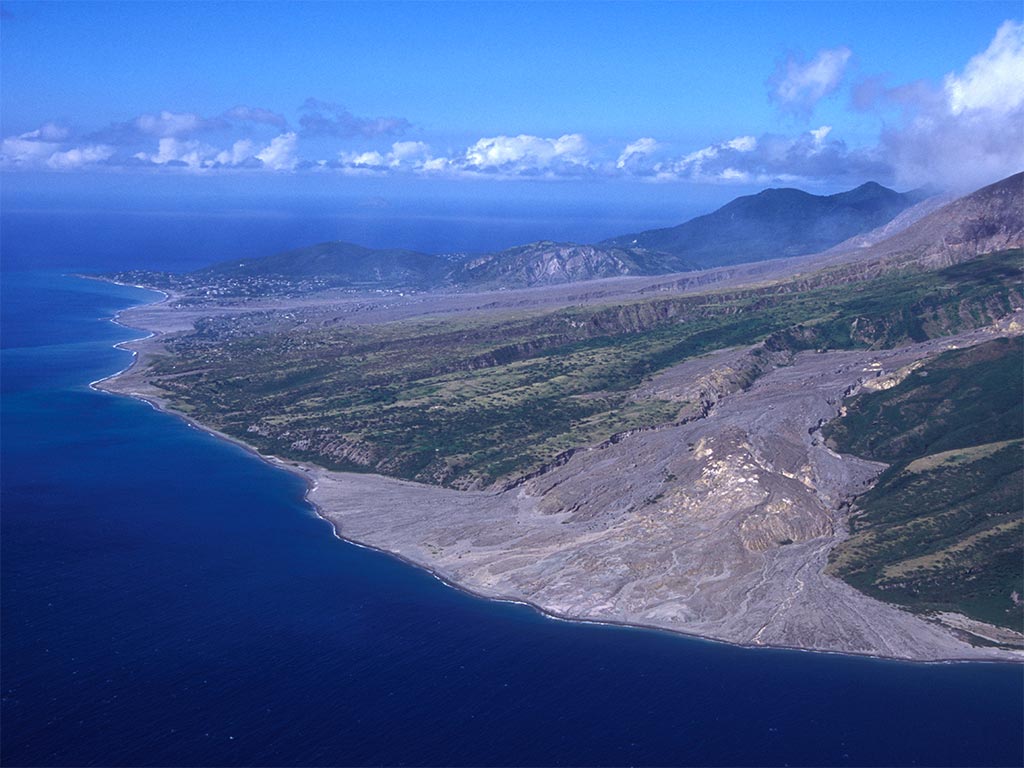Called the Emerald Island for its resemblance to the Irish coast, Montserrat is something of a tropical paradise. Lush, rolling vistas and small villages give way to the biggest hill of them all – Soufriére, dominating the southern half of the island – a hill under which much of the island’s population lived until the events of nearly twenty years ago.
For weeks, a series of eruptions had reverberated from the Soufriére Hills volcano, and when the ash began to pelt the town and its 4,000 citizens, they had no other choice but to leave. Within weeks, the town of Plymouth was buried and nearly two thirds of the island was placed within an exclusion zone that exists to this day.
The promise of a new capital town at Little Bay on the northwest coast of the island could revive the island
One would be forgiven for thinking that this would have a catastrophic effect on the tiny British Overseas Territory. Official estimates say that nearly 9,000 Montserratians left and are now living abroad – nearly twice the population left on the tiny Caribbean territory.
The loss of the island’s biggest settlement and, moreover, everything that a society needs to function, took a huge toll. The village of Brades has become the de facto base of operations for the island’s government, but now Montserrat is finally thinking about a permanent capital to replace Plymouth.
The promise of a new capital town at Little Bay on the northwest coast of Montserrat could revive the island. The plan is ambitious, with new government buildings, businesses and a new dock for passenger ferries. A new dock will allow for more regular connection with the island’s nearest neighbours, but it will also strengthen the island’s tourism industry. In the past the island had strong tourist appeal, but Hurricane Hugo in 1989 destroyed much of the island’s infrastructure and the tourists had all but dried up when Soufriére finally erupted.
The 225-acre project could bring a new lease of life to Montserrat. The new hub presents a unique opportunity – just as Pompeii is one of the most popular tourist attractions in the world, so too do the residents of Montserrat hope that their modern-day equivalent can bring people to the island.
According to the development’s website, Montserrat would seek to cater to “low volume, luxury cruises” – something they claim is different from other Caribbean islands. The medium-term goal for the island is budgetary self-sufficiency; at the moment the island relies on the British Government to finance it, but when the Little Bay development is complete this will hopefully change.
Ivan Browne, CEO of the Montserrat Development Corporation, said at a recent media forum that the development was about showing people that Montserrat is “more than the volcano… a vibrant economy of 5,000 people on a lovely island that has overcome these natural disasters and are looking to welcome people back.”
All the development has had a magnetic effect for the island. Sensing this renewed optimism, many former residents have returned to Montserrat. The latest census on the island showed a slight upswing in population, mainly from repatriation, as more citizens see a more concrete future for the island.
The volcano remains under the watchful eye of the Montserrat Volcano Observatory (MVO). The reality for Montserrat is that despite its best efforts to build and carry on, it is are nevertheless at the mercy of the Soufriére Hills. The volcano seems to have calmed significantly since 2010, with only the merest of seismic activity taking place.





